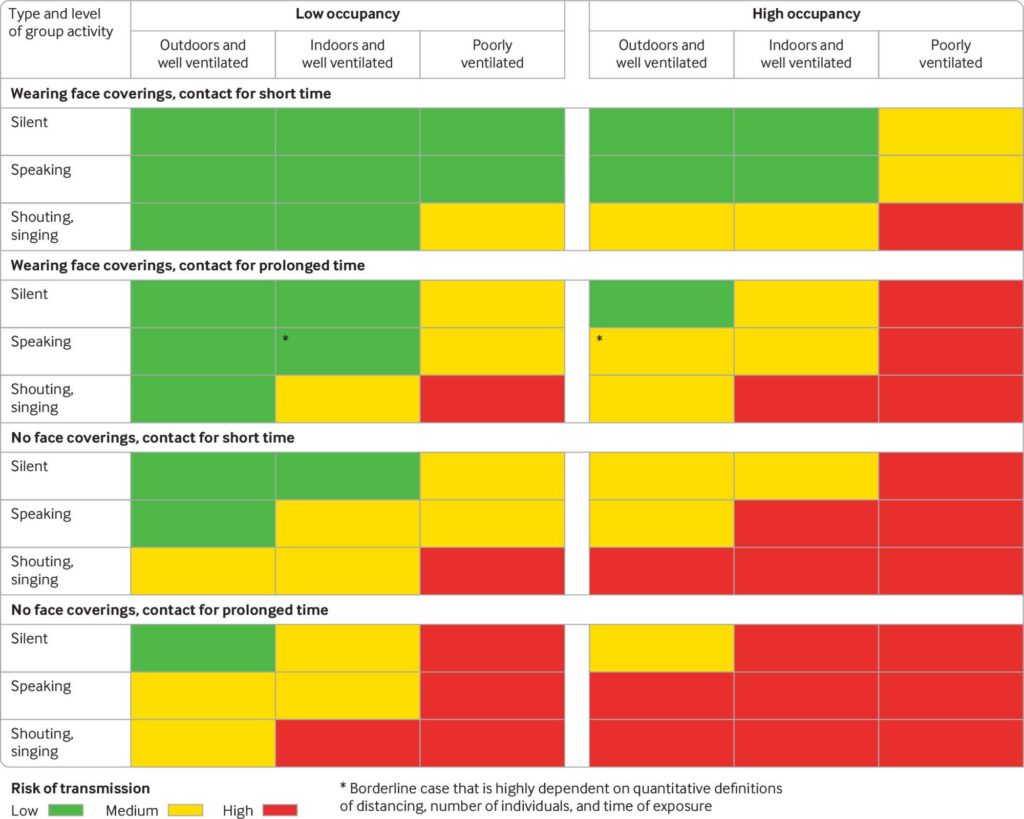Virtually every government-sponsored public service announcement since the pandemic began centers around the mantra of keeping a six feet (2 meters) distance between yourself and others. While this is a sensible suggestion, it is by no means foolproof. In fact, in some situations, this sort of distancing might offer virtually zero protection against infection with SARS-CoV-2, the virus that causes COVID-19.
Writing in the prestigious BMJ, a team of scientists led by Nicholas Jones, a clinical researcher at the University of Oxford, argues that “rigid safe distancing rules are an oversimplification based on outdated science and experiences of past viruses”. Instead, the scientists have proposed a more nuanced set of physical distancing rules that evaluates the risk of viral transmission based on setting, occupancy level, contact time, and whether face coverings are worn or not.

“Rules that stipulate a single specific physical distance (1 or 2 metres) between individuals to reduce transmission of SARS-CoV-2, the virus causing COVID-19, are based on an outdated, dichotomous notion of respiratory droplet size. This overlooks the physics of respiratory emissions, where droplets of all sizes are trapped and moved by the exhaled moist and hot turbulent gas cloud that keeps them concentrated as it carries them over metres in a few seconds. After the cloud slows sufficiently, ventilation, specific patterns of airflow, and type of activity become important. Viral load of the emitter, duration of exposure, and susceptibility of an individual to infection are also important,” the authors wrote in their study.
This physical distancing rule cheat sheet is based on the most recent findings concerning SARS-CoV-2 transmission. For instance, the authors of the review mention nine studies in hospital- and two in community settings that detected viral particles in air samples, suggesting the coronavirus can be spread through the air.
Other studies show that heavy breathing, singing, coughing, and sneezing generate enough moist, high momentum gas clouds of exhaled air that can extend the range of respiratory droplets up to 7-8 meters within a few seconds. This explains why a single person at one choir practice in the US managed to infect at least 32 other singers despite physical distancing. On the same note, specific airflow and ventilation patterns can be very important in determining the risk of viral transmission.
Of course, all these environmental factors also couple with whether a person wears a mask when determining the risk of infection.
“Further work is needed to extend our guide to develop specific solutions to classes of indoor environments occupied at various usage levels. Urgent research is needed to examine three areas of uncertainty: the cut-off duration of exposures in relation to the indoor condition, occupancy, and level of viral shedding (5-15 minute current ad-hoc rules), which does not seem to be supported by evidence; the detailed study of airflow patterns with respect to the infected source and its competition with average venting; and the patterns and properties of respiratory emissions and droplet infectivity within them during various physical activities,” the authors wrote.
“Physical distancing should be seen as only one part of a wider public health approach to containing the COVID-19 pandemic. It needs to be implemented alongside combined strategies of people-air-surface-space management, including hand hygiene, cleaning, occupancy, and indoor space and air managements, and appropriate protective equipment, such as masks, for the setting.”









